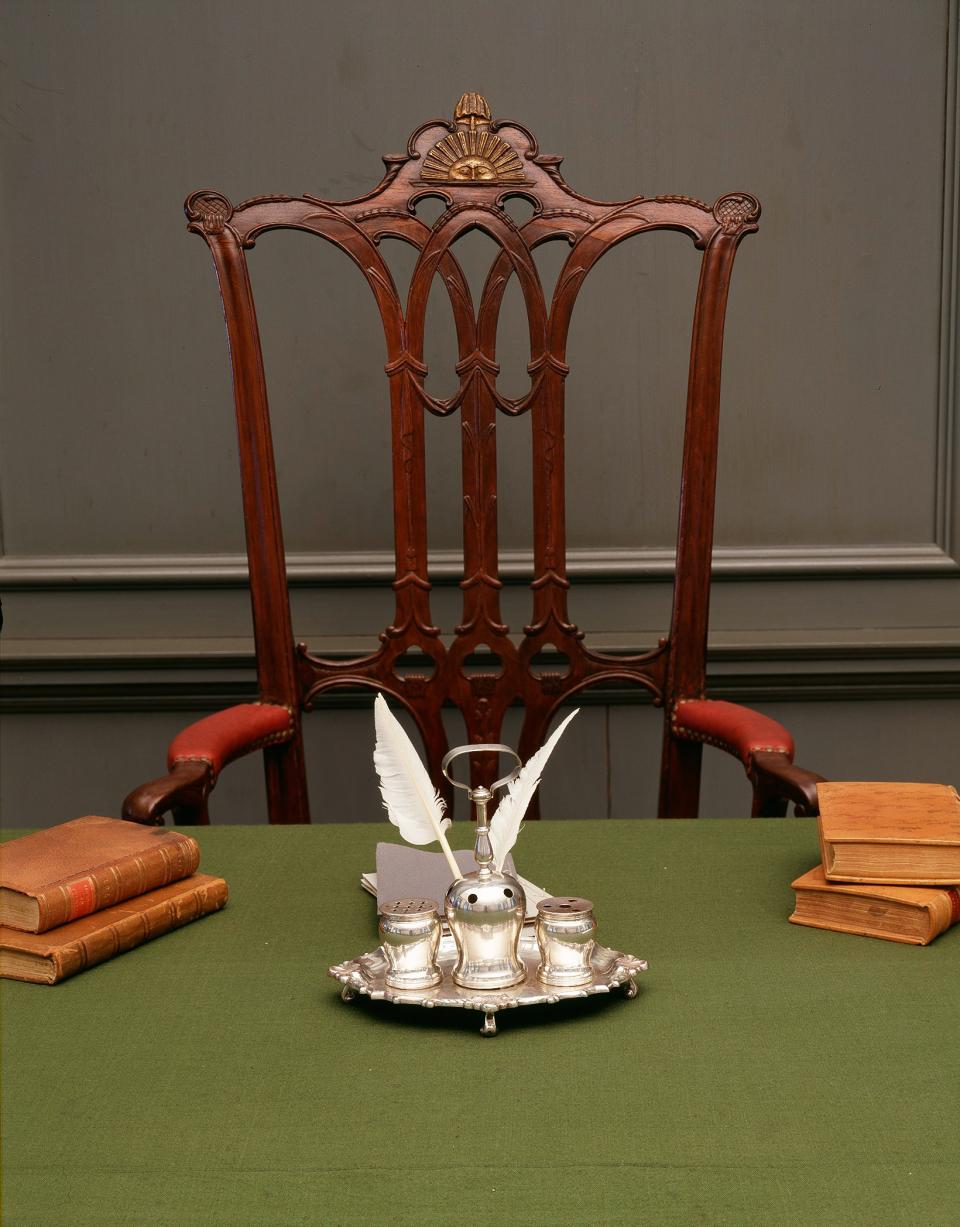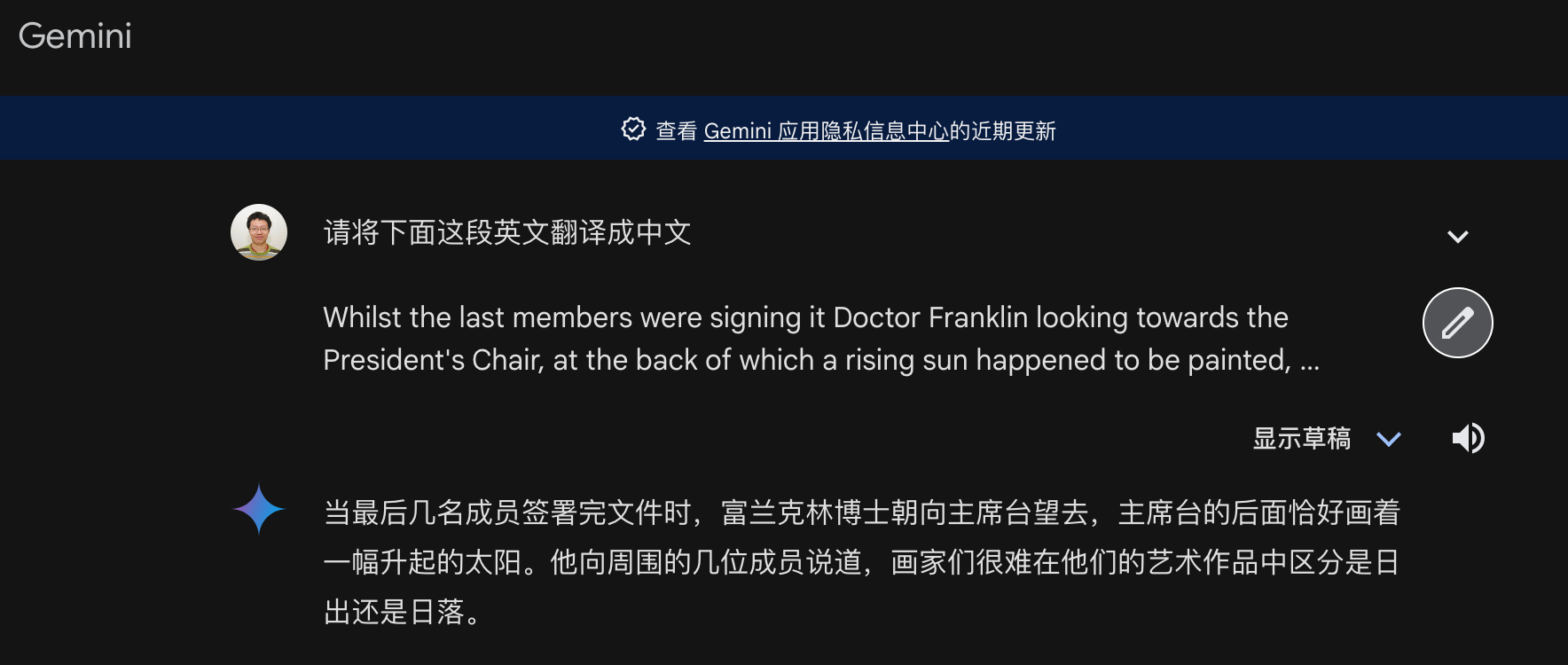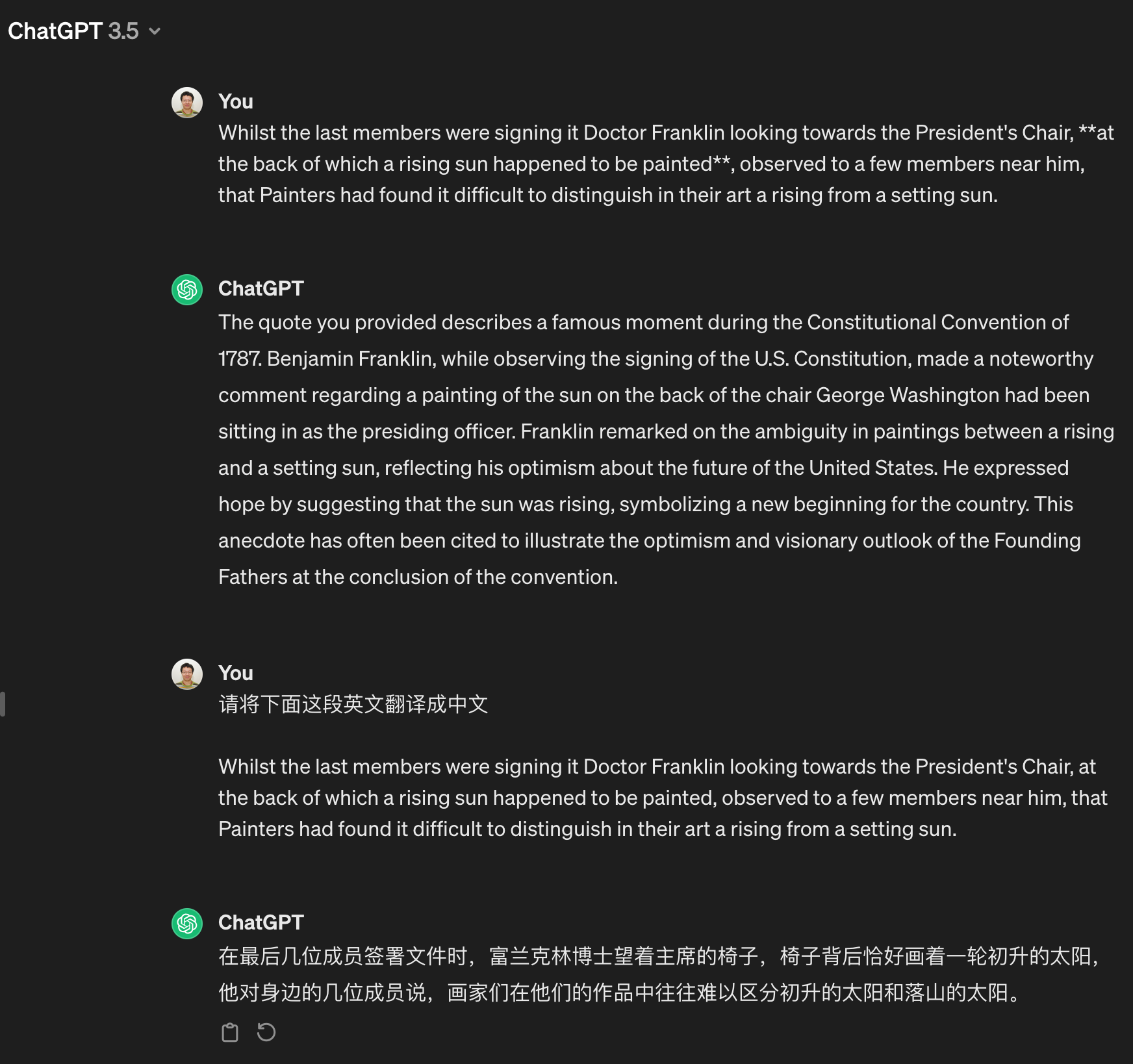[Historical Investigation] Did Yi Zhongtian Falsify American Constitutional History?!
(Translated from the Chinese version with the help of Claude. This article talks about translation from English to Chinese, therefore this English version might not make a lot of sense comparing to the original Chinese version.)
A while ago, I happened to stumble upon Yi Zhongtian’s “Philadelphia Storm” that I had previously bookmarked, which recounts the process of the 1787 Philadelphia Constitutional Convention. Since I was planning to visit Philadelphia, I decided to read up and learn about it to enhance my upcoming sightseeing experience (though I later failed to secure tickets to Independence Hall, which is another sad story).
Reading to the end, I found a footnote:
This description is based on Madison’s work, translated by Yin Xuan, “The Debates: Records of the American Constitutional Convention,” Liaoning Education Publishing House, 2003 edition, page 650. The original text reads: “When the last few delegates were signing, Dr. Franklin looked toward the president’s chair, behind which happened to be a painting of a rising sun.” After the initial publication of this book, a reader posted online accusing me of “falsifying American constitutional history.” First, because that rising sun image was not a painting but a relief carving; second, it was not behind the president’s chair but on the chair’s backrest. Therefore, during my 2007 visit to the United States, I specifically asked my hosts to arrange a special trip to Philadelphia to visit the Constitutional Convention site and see that chair with my own eyes, and I saw the rising sun image on the chair’s backrest. I also asked the tour guide whether there were any paintings on the walls back then, and the answer was no. This proves that the reader was correct and my description was wrong. I hereby make this correction and offer my apologies. As for the account in “The Debates: Records of the American Constitutional Convention,” whether it was Mr. Madison’s misrecollection, Mr. Yin Xuan’s mistranslation, or some other reason, I do not know.
The corresponding passage in the main text reads:
When the last few delegates were signing, the eighty-one-year-old Pennsylvania delegate, the venerable Dr. Benjamin Franklin, gazed with his profound eyes past the president’s chair, focusing on a work of art on the opposite wall. It was an oil painting. In that painting, a red sun was bursting forth. Franklin told the delegates beside him that sunrise was difficult to paint. Artists had discovered that it was hard to distinguish a rising sun from a setting sun in their paintings. During this time, I have been watching this painting behind the president, filled with hope and anxiety, unable to determine whether this sun was rising or setting. Now I finally have the good fortune to know that it is rising, not setting.
I greatly admire Franklin’s wise commentary on the outcomes of the Constitutional Convention, and I also appreciate Teacher Yi Zhongtian’s honest response. However, this example, similar to a game of telephone, piqued my interest — where exactly did the problem lie? It shouldn’t be difficult to clarify this. Could it be that Teacher Yi Zhongtian deliberately chose not to investigate further to save face for all parties involved?
Step One: Setting the Record Straight — Is the Rising Sun Image a Relief or a Painting?
Yi Zhongtian was correct; it is a relief carving. Or more precisely, it is a small metal ornament on the backrest of the president’s chair.

Step Two: Finding the Original Text for Comparison
Madison’s original text from “The Debates” (James Madison - The Debate that Made the Constitution of the United States, emphasis added by me):
Whilst the last members were signing it Doctor Franklin looking towards the President’s Chair, at the back of which a rising sun happened to be painted, observed to a few members near him, that Painters had found it difficult to distinguish in their art a rising from a setting sun. I have said he, often and often in the course of the Session, and the vicissitudes of my hopes and fears as to its issue, looked at that behind the President without being able to tell whether it was rising or setting: But now at length I have the happiness to know that it is a rising and not a setting Sun.
Yin Xuan’s translation (“The Debates: Records of the American Constitutional Convention”):
When the last few delegates were signing, Dr. Franklin looked toward the president’s chair, behind which happened to be a painting of a rising sun. He told several delegates beside him that painters had found it difficult to distinguish a rising sun from a setting sun in their paintings. He said that during the course of the meeting, I repeatedly gazed at this painting behind the president, with my hopes and fears about this issue constantly fluctuating, unable to determine whether the sun in the painting was rising or setting; now I finally have the good fortune to know that this sun is rising, not setting.
If I had been present at the meeting and seen that chair and the sun design on its backrest, I would consider Madison’s description accurate. If I hadn’t been at the meeting and only read Madison’s original text and Yin Xuan’s translation, I would consider the translation adequate. The problem lies in “…at the back of which a rising sun happened to be painted…” Here, “which” refers to the president’s chair. Madison meant “a sun was painted on the back of the chair,” while Yin Xuan translated it as “behind the chair happened to be a painting of a rising sun.” “Back” can refer both to the backrest and to the space or wall behind the chair. And “paint” refers to applying a layer of gold color to this small relief design to distinguish it from other parts of the chair back, but this word also happens to mean “to paint (an oil painting).” Who would paint an oil painting on a chair back? So it was translated as an oil painting on the wall behind the chair. In summary, a series of coincidences led to this misunderstanding. If any students with good English skills can provide further analysis, please let me know.
I estimate that Teacher Yi Zhongtian did a bit of research and then felt it was too complicated to explain, so he brushed it off with “whether it was Mr. Madison’s misrecollection, Mr. Yin Xuan’s mistranslation, or some other reason, I do not know.”
Update - How about LLM?
I tried translating with Gemini and ChatGPT, with the following results. You can judge for yourselves.

